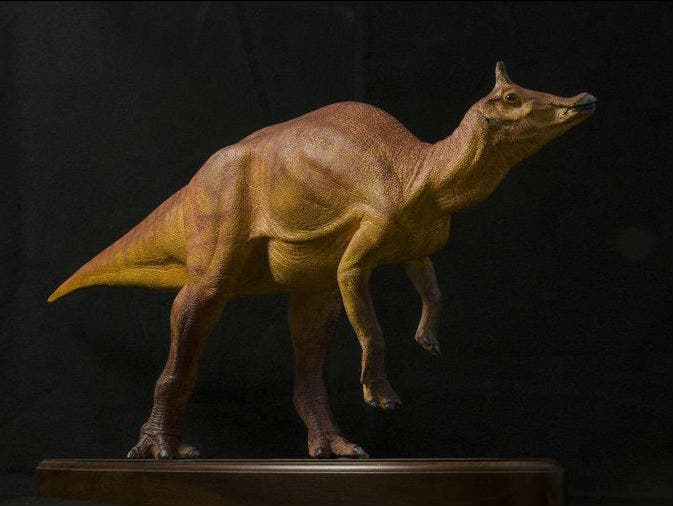US states getting state symbols can be a bit of a drag, but we’re definitely behind this decision. Augustynolophus, a herbivorous hadrosaur dinosaur from the Cretaceous, will now be California’s official dinosaur.

California already has a state flower (the poppy), a state animal (the grizzly bear), a state reptile (the desert tortoise), a state rock (serpentine), and even a state fossil (the saber-toothed cat). Now, you can add a dinosaur to that list. Gov. Jerry Brown announced Saturday the signing of the bill, saying that the measure is important “because it nurtures an educational opportunity for the youngest Californians to become interested in paleontology,” and scientific fields in general.
Like all hadrosaurs, Augustynolophus morrisi was a duck-billed vegetarian. Its particular bill was specialized to chew its plant food. The creature inhabited what is today California anywhere from 100 to 66 million years ago, during the Late Cretaceous period. It was a fairly large dinosaur, standing at about 10 feet tall (3 meters) and 30 meters long (9 meters). We don’t really know much else about this dinosaur since the fossil record hasn’t been too generous. Paleontologists hope that this will inspire a new generation
It makes sense to name the Augustynolophus a state dinosaur since all known fossils come from California, which was a part of Laramidia, an island continent that existed during the Late Cretaceous period (99.6–66 Ma), when the Western Interior Seaway split the continent of North America in two. Even so, dinosaur fossils aren’t that common in the Golden State.
California isn’t the only state to have a state dinosaur — the same can be said for Colorado (Stegosaurus), Iowa (Tyrannosaurus), and Wyoming (Triceratops), among others. The District of Columbia also has a “state” dinosaur called, of course, Capitalsaurus.


